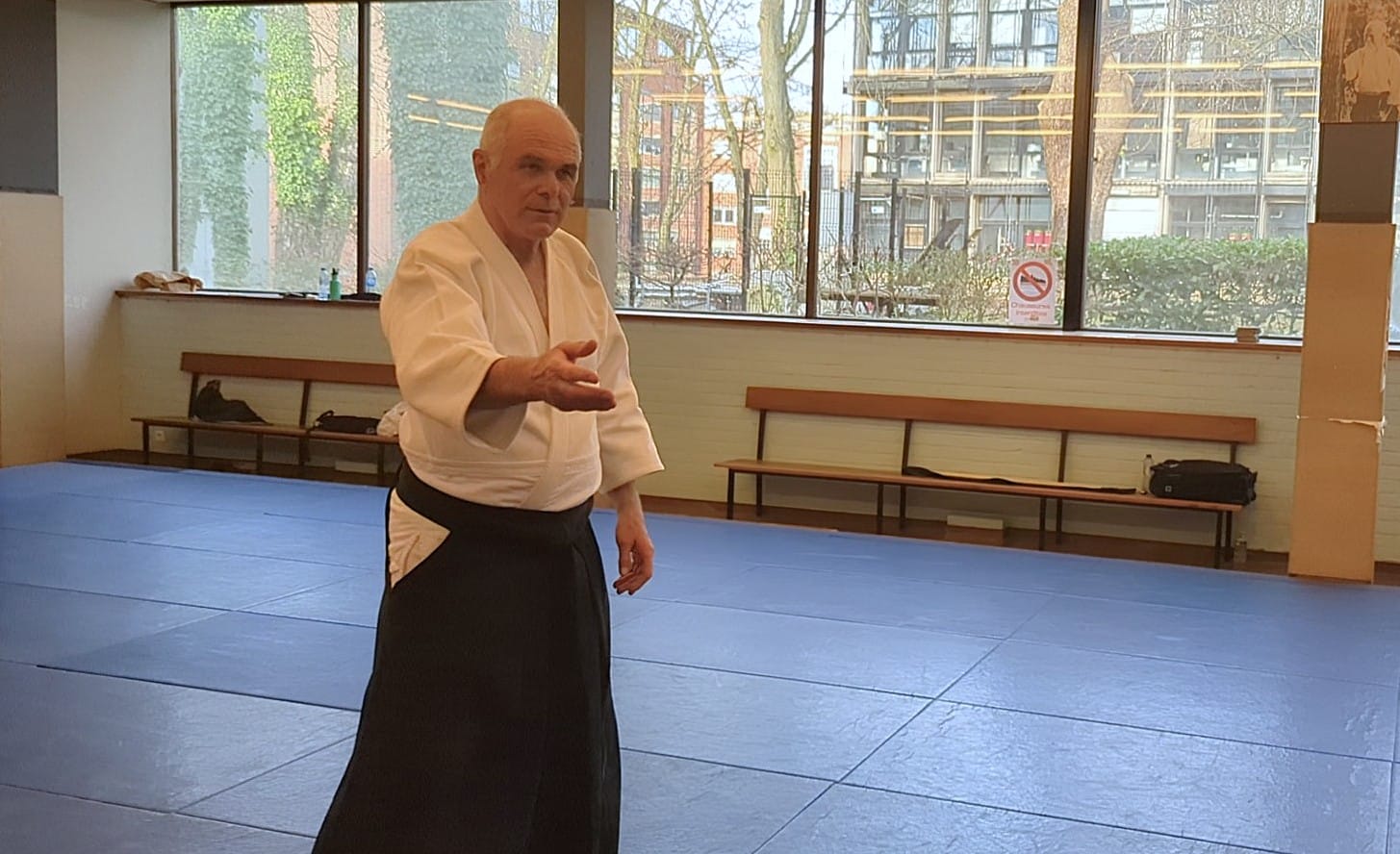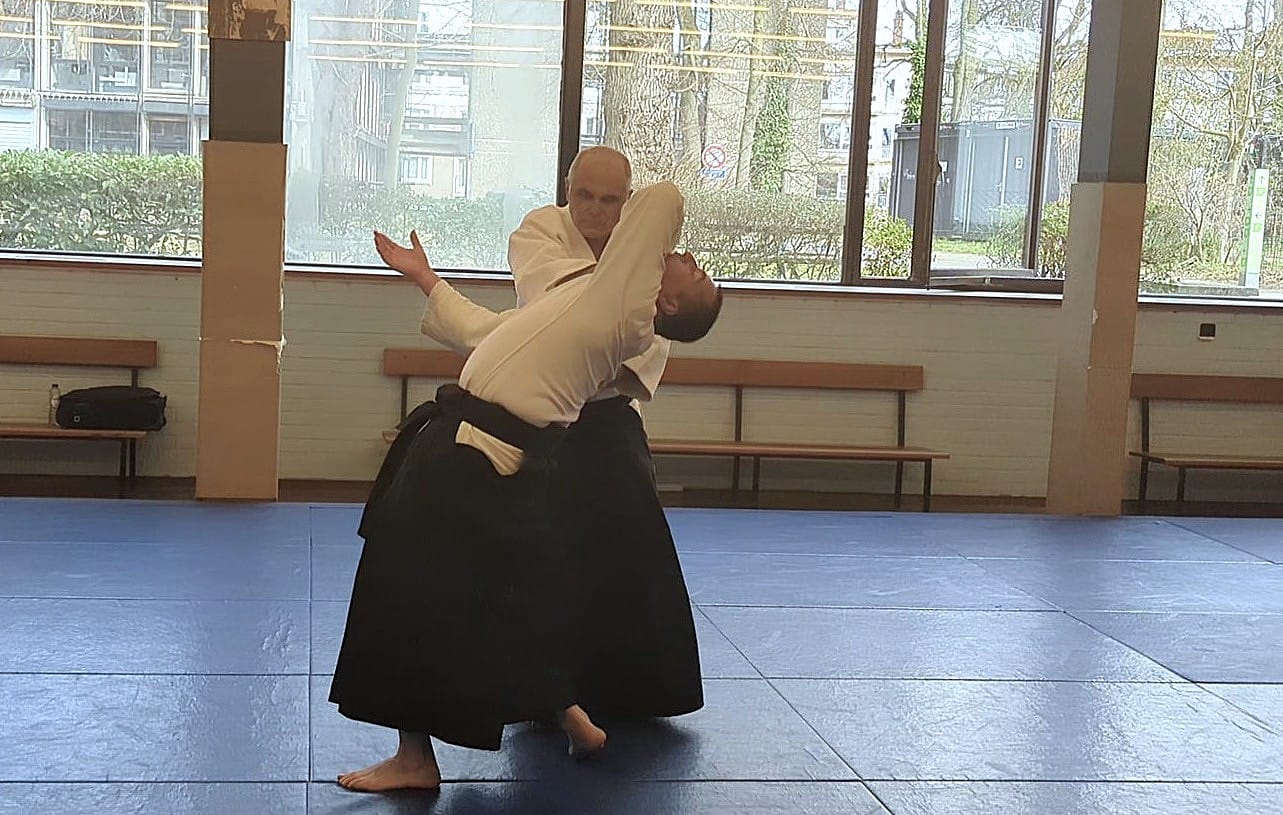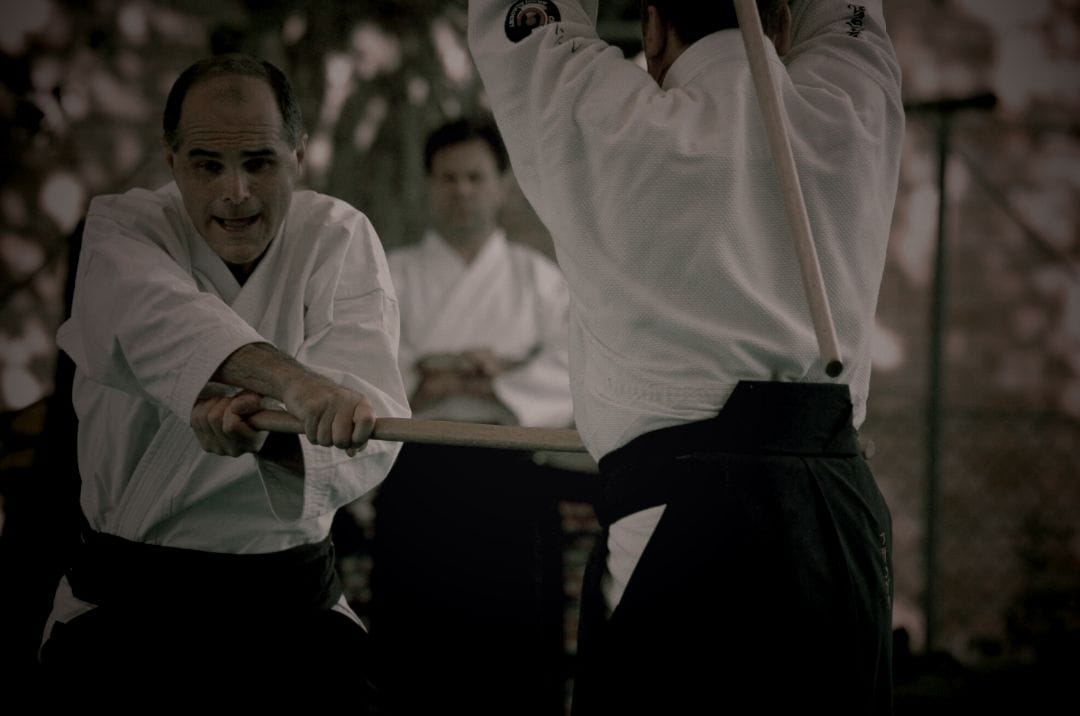Everyone is tired at the end of a course. Twelve hours of Aikido in two days takes it out of you.
But it is sometimes in these moments of fatigue, at the end of the weekend, when all the energy of the bodies has been washed away by the training and is no longer an obstacle to anything, that in extremis a question arises that brings knowledge forward in an unexpected way.
Thanks to Steve who asked this question:
Indeed, there is sometimes a more important lesson hidden under a correct one.
Everyone has heard of the four directions of the shiho nage throw (shi = four, ho = direction), and they are explained over and over again, at least by teachers who have learnt Morihiro Saito's teaching method correctly.
However, these directions of throw are only the most visible part of shiho nage. And there are four more essential and less apparent directions. These are the four corners of support for the movement itself.
It turns out that the shiho nage throw is characteristic of this square-shaped displacement, and that it also allows throwing in four different directions, which is why shiho nage bears this name. But this same displacement according to four successive points of support is found in all Aikido techniques, from ikkyo to yonkyo to shiho nage, via irimi nage, kaiten nage and kote gaeshi.
It therefore appears that we are not dealing here with an element specific to shiho nage, which would only be found in the shiho nage technique, just as irimi is not an element specific to irimi nage which would only be found in the irimi nage technique.
The significance of this is that movement according to four successive supports arranged in a square is an element of the principle of displacement in Aikido, and is therefore found - as is irimi - in all Aikido techniques. It is fundamental, and this is the reason for the kenka goshi support at the moment of the action, which - let us remember - is always in shikaku (square) and never in sankaku (triangle). The hanmi position (triangle) is of course essential, but it is only at the start of the movement and at its end.




